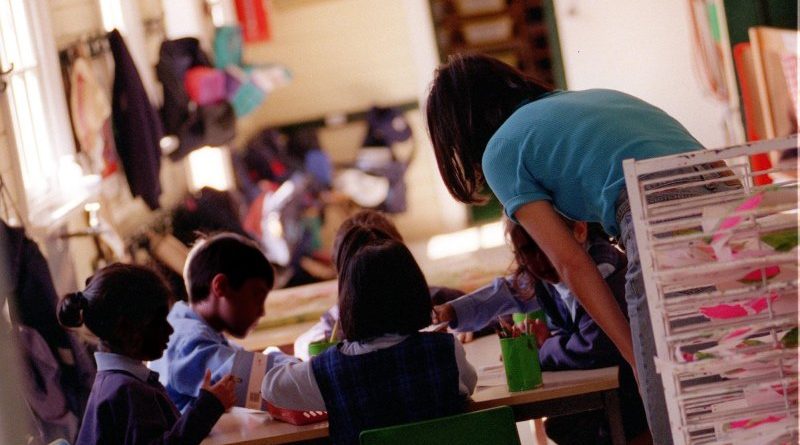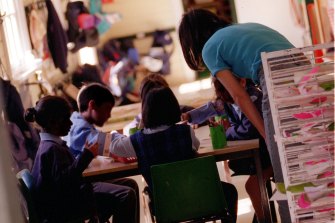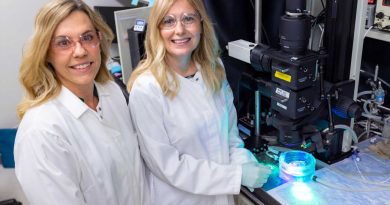Parents need to ensure their children are vaccinated
For our free coronavirus pandemic coverage, learn more here.
This week, students return en masse and on schedule to state and other schools in Victoria after two years of interrupted learning.
Despite the ongoing pandemic and new daily case numbers in the thousands, the return to school is necessary for young Australians, their exhausted parents, and for the economy.
Many groups have suffered disproportionately through the pandemic, none more so than our kids who have endured previously unimaginable disruption to their formal education, their emotional wellbeing, their socialisation and their friendships.
Victoria and NSW adopted nearly identical back to school policies to ensure children could return to class at the start of term 1.Credit:Quentin Jones
Two surveys of parents by the Royal Children’s Hospital in Melbourne in 2020 found students suffered “substantial” mental health impacts from remote learning.
For Victorian students who lost 200 days of face-to-face teaching through the pandemic, the surveys suggested online learning had a negative mental health impact on 57 per cent of teenagers. The figure was 36 per cent in NSW.
Of course the return to school is not without its risks, especially to teachers and other school staff and wider school communities.
The state government and schools are to be applauded for the measures taken to minimise the spread of the virus.
In Victoria, the Andrews government has completed a rollout of 51,000 air filters and delivery of 4 million Rapid Antigen Test (RAT) kits to be used voluntarily every two days. It is running a vaccination “blitz” of children, with 15 pop-up vaccination clinics at primary schools.
Masks are mandatory for children in grades 3 and above and for teachers who will also need to have received a booster by next month. More than 300 schools have begun constructing shaded outdoor learning areas.
Governments acknowledge that in the early weeks of the school year there will be an increase in community transmission of the highly infectious Omicron variant. We need to do everything we can to contain its spread.
Our biggest risk remains the low vaccination rate for under 12s – about 37.5 per cent in Victoria and 33.5 per cent in NSW as of Friday.
It’s true that young people are less vulnerable to serious illness from COVID-19. Nonetheless, they can transmit the virus, posing real dangers for teachers, other staff and parents.
So, there is a strong case for more simple and clear public health messaging from governments about the urgent need for children to be vaccinated.
Schools would also do well to inform parents about the importance of vaccination and the proper use of RAT kits.
Ultimately, however, responsibility for vaccinating kids falls to parents who need to act with haste so that students and teachers can go to school and concentrate on teaching, learning, creating and playing.
That includes parents doing whatever they can to get their children vaccinated and getting their own booster shots. They should explain to their children the importance of wearing masks properly and resisting the temptation of sending children to school with symptoms, however mild.
Parents need to reflect on the difficulties and frustrations of remote learning over the past two years. In their own and the wider community interest, they need to ensure their kids are vaccinated.
The Morning Edition newsletter is our guide to the day’s most important and interesting stories, analysis and insights. Sign up here.
Most Viewed in Lifestyle
From our partners
Source: Read Full Article




